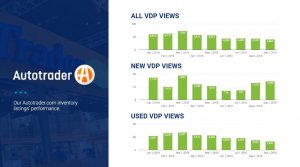I'm back in retail after being on the vendor side (which I think everyone in retail should do at least once and vice versa) for nearly two years. Prior, I spent 14 years on the retail side mainly in Internet/BDC/eCommerce/Dig Ad. Around 2010, I was struggling how to measure ROI of classified vendors [insert joke here]. Leads didn't make sense so started focusing on their cost per VDP. Back then I was holding AutoTrader to under a dollar and Cars.com to $.85 and really used that through 2016. During that time, if they wanted a package up-sell I needed to see that cost stay the same or lower for it to make sense and ultimately keep the product.
Fast forward to 2018 and it looks like my stores (same group I was at prior) are running just below $.70 per VDP view with both AutoTrader and Cars.com (CarGurus is quite a bit lower per). My question to you is do you use Cost Per VDP as a KPI and if not, what do you use in 2018? Analytics/Referrals, Leads, Actions on site, etc?
Fast forward to 2018 and it looks like my stores (same group I was at prior) are running just below $.70 per VDP view with both AutoTrader and Cars.com (CarGurus is quite a bit lower per). My question to you is do you use Cost Per VDP as a KPI and if not, what do you use in 2018? Analytics/Referrals, Leads, Actions on site, etc?












